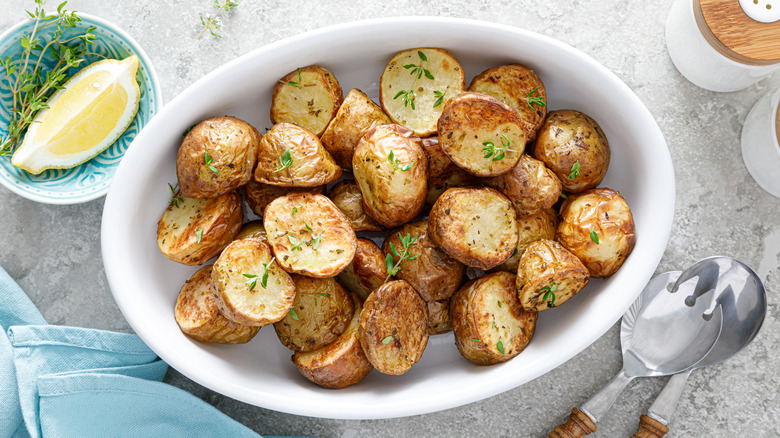Tilly Ramsay's Tip Will Give Roast Potatoes A Perfect Texture Every Time
As the daughter of acclaimed chef and restaurateur Gordon Ramsay, Tilly Ramsay certainly knows her way around the kitchen. She frequently showcases her culinary skills on her family's cooking series "Matilda and the Ramsay Bunch," has published her own cookbook, and was even a contestant on the celebrity edition of "MasterChef Australia," according to Network 10. The young chef has already built up quite the repertoire, but it's her simple method of roasting potatoes that impressed audiences the most.
As Tilly shared in an episode of "Celebrity MasterChef Australia" (via Lifehacker), she cooks her potatoes in two stages. She starts off by par-boiling cubed potatoes in a saucepan, after which she drains them and puts on a lid to let them steam, before shaking them around in the pan. She then transfers the potatoes into a baking tray, covers them in duck fat, and roasts them in the oven. After 30 to 35 minutes, the finished potatoes become crisp on the outside and fluffy on the inside.
How Tilly Ramsay's potato roasting technique works
A natural talent for cooking may be in her blood, but it isn't just the Ramsay touch that causes these potatoes to turn out so perfectly. Tilly Ramsay's method of roasting potatoes works well because she uses food science to her advantage. As Bon Appétit explains, par-boiling potatoes before roasting them sets them up for success because it has the effect of making the inside light and fluffy. To clarify, "par-boiling" is the act of partially boiling something, hence the name (via Bob's Red Mill).
This step is standard for many potato recipes, but when you follow this up by shaking the pan once the water has been drained, it exposes the starch on the surface of the potatoes. When coated in oil and placed in a hot oven, the starch acts like flour, giving the exterior of the potatoes a crisp texture. Frying them on the stovetop produces similar results, but the oven works better because it browns the potatoes gradually. As a result, the inside stays soft, while the outside roasts to a golden crisp.

